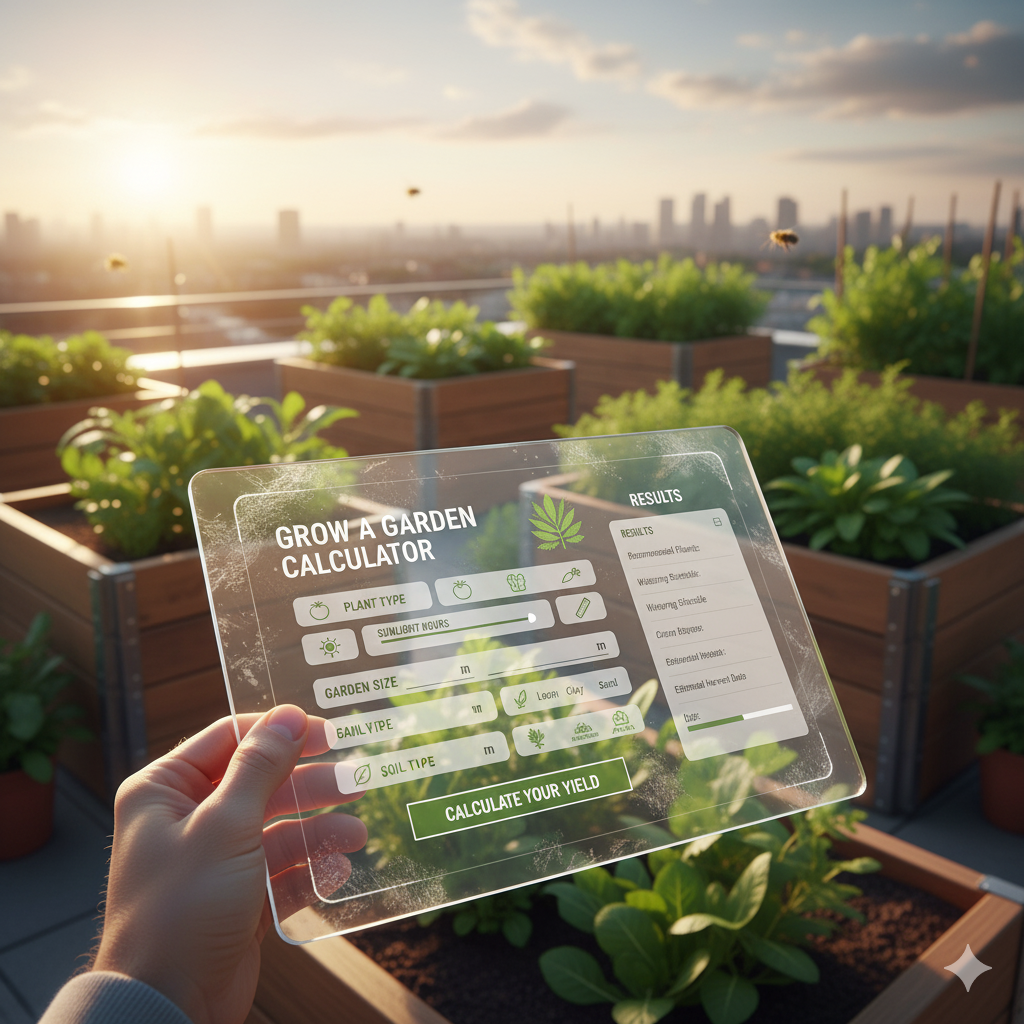Gardening is more than just a hobby; it’s an art form that connects us with nature. Whether you’re planting vibrant flowers or cultivating fresh vegetables, successful gardening requires planning and organization. Enter the garden calculator—a powerful tool that can transform your gardening experience.
Imagine having all the information you need to design the perfect garden right at your fingertips. A garden calculator helps you plan layouts, estimate costs, and even figure out how much sunlight each plant needs. It takes the guesswork out of growing a healthy, thriving garden.
For both novice gardeners and seasoned pros, using a grow a garden calculator can be a game-changer. Ready to dig in? Let’s explore this essential tool and discover how it can elevate your gardening game!
Benefits of Using a Garden Calculator
Using a garden calculator can transform your gardening experience. It simplifies planning, making it easier to visualize your garden layout before digging in.
One of the biggest benefits is efficient space management. With precise measurements, you can determine how many plants fit into specific areas.
Time-saving is another significant advantage. Instead of guessing planting times or quantities, a garden calculator provides accurate data tailored to your selected crops and local climate conditions.
Additionally, these tools often include features for tracking plant growth stages and optimal harvesting times, ensuring you’re always informed about what’s happening in your garden.
A garden calculator also allows beginners to feel more confident as they embark on their gardening journey. By providing essential guidelines and recommendations, even novice gardeners can grow with knowledge at their fingertips.
Factors to Consider Before Using a Garden Calculator
Before diving into the world of garden calculators, it’s essential to identify your specific gardening goals. Are you looking to grow vegetables, flowers, or maybe a mix? Each type has different needs.
Next comes understanding your space. Measure your available area accurately. Knowing the dimensions helps in selecting the right plants and layout.
Soil quality is another critical factor. Test your soil for pH levels and nutrients. A good calculator can provide insights based on this data.
Consider local climate conditions as well. Different plants thrive in varying temperatures and humidity levels. Researching hardiness zones can guide you toward suitable choices.
Think about sunlight availability in your garden plot throughout the day. Some plants require full sun while others do better in partial shade; matching these requirements with what you have will set you up for success.
How to Use a Garden Calculator
Using a garden calculator is straightforward and intuitive. Start by selecting the type of plants you want to grow. This could be vegetables, flowers, or herbs.
Next, input your available gardening space dimensions. Garden calculators often allow you to specify whether it’s in raised beds, containers, or directly in the ground.
After that, consider factors like sunlight exposure and soil type. These details help tailor recommendations for plant choices and spacing.
Many calculators also provide planting dates based on your local climate. Input your zip code to receive specific guidance for optimal growth periods.
Review the suggested layouts and adjustments offered by the tool. This ensures you’re maximizing both space and productivity while aligning with your gardening goals.
Popular Garden Calculators and Their Features
When it comes to choosing a garden calculator, several standout options cater to different gardening needs.
One popular choice is the “Garden Planner.” This tool allows users to design their garden layout with drag-and-drop functionality, making it easy to visualize where each plant will go. Its companion feature offers planting advice based on your local climate.
Another favorite is the “Veggie Garden Calculator,” perfect for those focused on growing vegetables. It provides tailored recommendations for spacing and planting times specific to various crops, ensuring optimal yield.
“GrowVeg” combines an intuitive interface with a powerful database of plants. Users can access personalized plans while learning about companion planting techniques that boost growth.
The “Soil Calculator” helps determine soil volume needed for raised beds or planters based on dimensions you input, simplifying your preparation process significantly. Each tool brings unique features designed to enhance your gardening experience effectively.
Tips for Maximizing Your Gardening Results with a Garden Calculator
To maximize your gardening results with a garden calculator, start by gathering accurate measurements of your space. Knowing the dimensions helps you make precise calculations for planting.
Next, familiarize yourself with plant spacing requirements. Each type has its own ideal distance to thrive. Inputting these values into the calculator ensures optimal growth and reduces competition among plants.
Don’t overlook local climate conditions when using your calculator. Adjusting for seasonal changes can improve yield and health of your garden.
Regularly update the data in your garden planner as seasons change or new plants are added. This adaptability allows for better resource management over time.
Consider companion planting strategies suggested by the calculator. Pairing compatible species can enhance productivity and deter pests naturally, leading to a flourishing garden environment without heavy reliance on chemicals.
Conclusion: The Importance of Planning and Organizing with a Garden Calculator
Planning and organizing your garden can significantly enhance your gardening experience and outcomes. A grow a garden calculator acts as a valuable tool, helping you make informed decisions about what to plant, how much space is needed, and when to sow seeds. It takes the guesswork out of gardening.
By utilizing a garden calculator, you can optimize your planting schedule based on climate zones and growing conditions specific to your area. The ability to visualize layout options ensures that every square foot of space is used efficiently for maximum yield.
Moreover, keeping track of growth cycles and companion planting becomes easier with these calculators. This level of organization not only improves the health of your plants but also enriches the overall aesthetic appeal of your garden.
Investing time in planning using a garden calculator ultimately leads to more productive gardens filled with thriving plants. Embracing this technology adds structure to creativity while fostering a deeper connection with nature through well-planned cultivation strategies.




